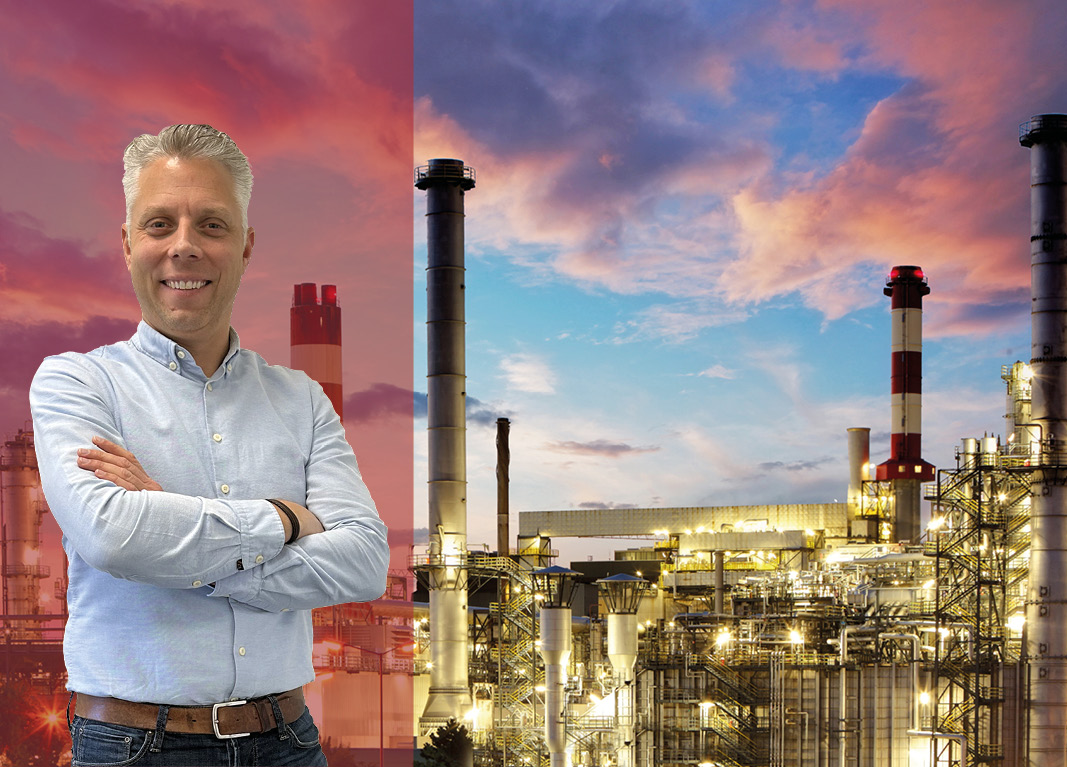Gain inspiration from our specialists who share their expert knowledge and valuable insights into their daily activities in personal blogs.
Dennis Verheij
Accountmanager International Projects
Sustainability and CO₂ reduction are becoming increasingly important in these projects. More and more companies are looking for concrete solutions to reduce their emissions, and carbon capture—capturing and storing or reusing CO₂—is receiving a lot of attention.
There is much more focus on highly polluting sectors and heavy transport, such as shipping and freight transport, where carbon capture can really make a difference.
Hydrogen is also an important topic in the energy transition, but carbon capture offers direct opportunities to reduce CO₂ emissions from existing processes. “We have already seen projects in which captured CO₂ was combined with hydrogen to produce methanol. It was still at an early stage, but it shows how different technologies can reinforce each other.”
Carbon capture means preventing CO₂ from being released into the atmosphere. That CO₂ is transported to a large pipeline system and stored in an empty gas field. In Rotterdam this already happens with companies such as Shell, Esso, Air Liquide and Air Products.
There are roughly two approaches: storage and reuse. With storage, CO₂ is kept underground, for example in empty gas fields beneath the North Sea. This is safe for long periods and prevents emissions from entering the atmosphere. In addition, there is increasing focus on useful applications for reuse. We already had a project where captured CO₂ was combined with hydrogen to produce e-methanol. It was intended for the shipping industry, but it was still at a very early stage. The sector was not yet ready for the transition. However, such innovations show that CO₂ does not have to be only a waste product in the future, but can also become a raw material.
Van Leeuwen does not develop carbon capture installations itself, but supplies the materials needed to build these facilities. Pipes, flanges, fittings - basically everything, and in all steel grades requested by the customer. A concrete example is the Air Products project. This company is building a blue hydrogen plant that will capture and store 95% of emissions. CO₂ is captured during production and then transported through pipelines to be stored in an empty gas field in the North Sea that has no other useful purpose. We supply large quantities of materials for that project.”
Even though the technology exists, challenges remain. “We know very well what we can do with captured CO₂. But the problem is that end users such as the shipping sector are not always ready for it. You might have a fantastic plant, but no customers buying the product. The origin of steel is also an issue. A lot of steel comes from countries like China or India, where environmental regulations are still limited. In Europe, production is becoming more sustainable. From next year on, companies must prove how much CO₂ was emitted during production, verified by an independent body.
Sustainability will increasingly determine how the entire supply chain operates. I am convinced that companies that go green will soon have priority. Not only with customers, but also because legislation and certification will enforce it. For example, you will pay penalties for pipes that are not sustainably produced. In this way, Van Leeuwen contributes to today’s projects and - together with customers and suppliers - prepares for the sustainable value chains of tomorrow.
